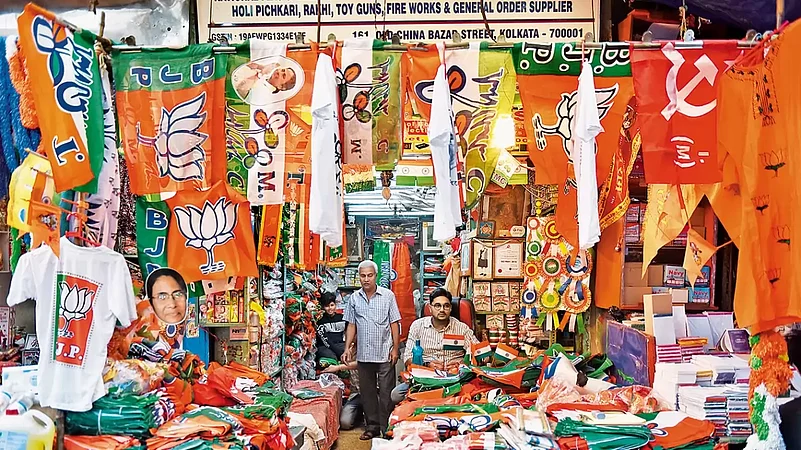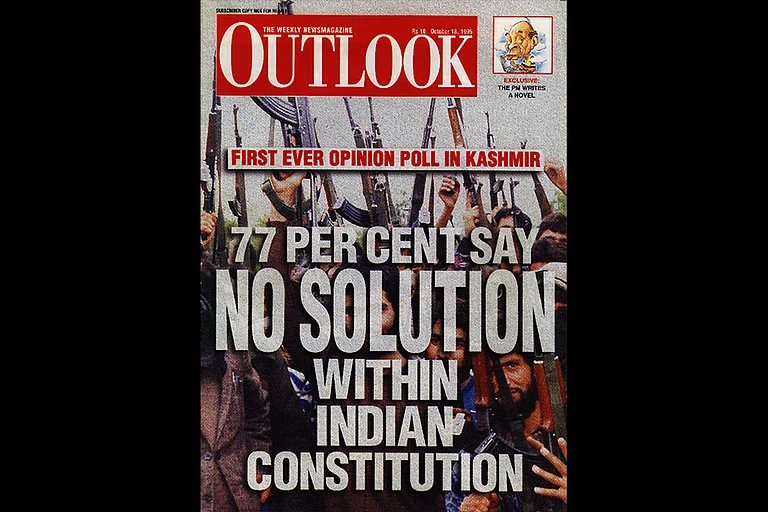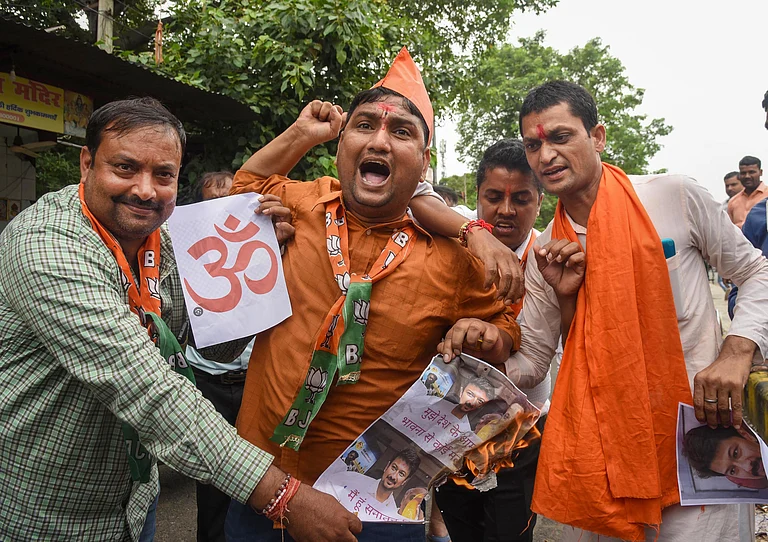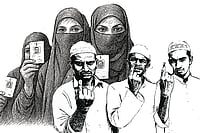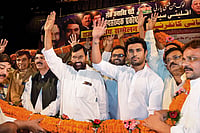This article was published in the Outlook magazine issue 'One Nation, One Election/One Nation, Many People' dated October 1, 2023. To read more article from the issue, click here.
India after traversing almost seven decades of electoral democracy, with all her trials and tribulations, the very idea of One Nation, One Election (ONOE) now seems quite outlandish for the simple reason that the architecture of the election process, as envisaged constitutionally and practised in accordance with the imperatives of federalism, doesn’t allow much space for it. Indian federalism, to begin with, is both structurally and process-wise multilevel–Centre, State and Local—and elections happen at all the levels according to their own contingencies and exigencies. Can we conceive of elections, notwithstanding the size and scale, at all three levels at one go? Why is nobody talking about local elections? Panchayats and municipalities are the bedrock of Indian democracy and any sort of marginalisation of local elections or, for that matter, trivialisation of state elections by the ONOE scheme would gradually subvert the ‘constitutionalisation of democratic politics’ in India.
The ONOE
The most oft repeated arguments by the government in support of synchronised elections are largely threefold: one, that the frequent elections throughout the year across different levels of federal polity is not only a case of ‘public inconvenience’ but also a burden on the functioning of smooth governance. Two, that it will offload some of the recurring costs of electioneering processes while conducting elections with the assumption that the voter would simultaneously, perhaps on the same day, vote for the lower house of the Parliament, the state legislative assembly and the local bodies (rural or urban). And third, that in the regular elections, with an average of two to five state assemblies going to polls every six months, the bureaucracy and other public officials get embroiled for a considerable period of time, not in their essential task of public service delivery and development needs of the nation, but in some sort of ‘extra-curricular’ activities. They argue that the perpetual elections, with the imposition of the Model Code of Conduct (MCC) in the run-up to the elections, create disruptions, distortions and disharmony in civil society as elections are seldom fought without bickering and conflicts between political parties. These arguments on the surface may have some merits, but a closer analysis of ONOE reflects multiple electoral apprehensions and power aggrandisement of the Bhartiya Janata Party (BJP) for more and more centralisation.
The Absence Of Consensus-Building
All major decisions, including demonetisation, Goods and Service Tax, and the pandemic management and bailouts that the present government undertook in the recent past point towards the absence of consensus-building exercise within the federal polity and more towards the centralisation of power at the Union level, both horizontally and vertically. The government’s predisposition to implement synchronised polls at the earliest is in tune with its centralisation spree. The polls would entail, nevertheless, making major amendments to the constitution and, of course, ratification by one-half of the states, as these amendments would require a change in Article 243K which mandates State legislatures and State Election Commissions to regulate the elections of the panchayats and municipalities. Also, the ‘pith and substance’ of the elections to the legislature of the states is a matter of state list (item 37), and the legislature of the states have exclusive power to make laws on the matters enumerated in the state list (Article 246). Any encroachment in the legislative competence of the state by the Union, therefore, would necessarily require harmonious consensus with the state(s), or else it would lead to a federal dispute between the Government of India and one or more states inviting Supreme Court’s original jurisdiction to solve the dispute (Article 131), and to which Justice Bhagwati remarked that resolving federal disputes is a ‘‘necessary concomitant of a federal or a quasi-federal form of government’’. With the amendments required in the Constitution, particularly in Articles 83, 85, 172, 174 and 356, to implement ONOE, there seems to be a danger of reading down or perhaps striking at the very core of the principles of federalism and the basic structure of the Constitution.
Federalism And Elections
Indian federalism is sui generis, in a sense that it doesn’t fit into any classical model of federalism. Its nature has evolved into a centralised federalism from quasi-federalism, and the dynamics of states’ autonomy since independence has largely been hinged on party politics, both national and regional parties.
However, at the core of any federal design is the presence of at least two governments, one at the Centre and the other at the state(s), and these two governments must be formed on a chosen basis of electoral processes. The two units must share the sovereignty in an inter-dependent manner and also must function independently in terms of carrying their own self-rule. The operations of shared-rule and self-rule, necessitated by constitutionalism, give a new meaning to the pursuit of ‘unity in diversity’ and to the ways to accommodate and manage societal and territorial diversity.
The government at the Centre, to control the state administrations, yearns for its own party to win elections in the states. During political mobilisation for elections, the call for double-engine government by the BJP leaders seductively indicate that both a PM and a CM from the same party would be advantageous for the people of the state. In hindsight, the BJP’s, and in particular PM Modi’s, push for ONOE is the belief that the party would tide over the major apprehensions and skepticism concerning next year’s elections. They have a strong feeling that a voter would vote for the same party at all the levels without thinking much about the split-ticket voting. The BJP perceives state elections as a stumbling block in its complete Parliamentary dominance, both in the Lok Sabha and the Rajya Sabha, and therefore would want to downplay state elections by combining it with national elections. There is a gap between BJP’s Lok Sabha performance in most of the states and the subsequent assembly elections (2014-23) in terms of both vote share and seat share. Perhaps, to bridge this gap, the BJP believes in combining the elections. The party seems to be worried about the fact that despite high approval ratings of both the party and the PM, it is losing ground in states where there is presence of strong regional parties or a strong Congress. If BJP’s centralisation spree goes on at the cost of its own state-level leaders, weak state-level leaders may render the BJP losing further ground in state politics. With ONOE, the BJP imagines it can do away with its apprehensions of losing ground in state politics.
The False Conjecture
India has strong multiple regional parties and they articulate the regional aspirations. They also express the specificities of the diversities and are seen as supporting federalism, for the fact that state-specific issues and problems get highlighted at the national level during separate state elections. ONOE will undoubtedly overshadow states’ politics and therefore weaken federalism’s prospects of states’ self-rule. With ONOE, are we looking forward to one nation, two national parties, or even one-party rule?
Given the general elections mid-next year, it is time to discuss the performance and accountability of the incumbent government at all levels—political, social and economic. It is time to talk about the criminalisation of politics, corruption, crony capitalism, surreptitious funding of political parties, opaque electoral bonds scheme and prolonged state elections. It is time to drop the idea of ONOE.
(Views expressed are personal)
(This appeared in the print as 'Top-Heavy Pyramid')
Tanvir Aeijaz is programme director and fellow, centre for multilevel federalism and teaches public policy at Delhi University







